CIA Sponsored Terror, Civil Liberties, Human Rights, Iraq Veterans, Iraq War, Military Tribunal, NSA Spying, Political Prisoner, Prison Industry, Torture, Truth to Power, Uncategorized
Podcast: Play in new window | Download
Updates:
- Heidi Boghosian: Attorneys Make United Nations Urgent Appeal Request For Mumia Abu-Jamal
—-


FiSaraha International Film Festival
Co-host, attorney Michael Ratner recently attended the 11th FiSaraha International Film Festival in Africa’s Western Sahara Desert. He bring us up to date on the festival and the larger issue of Sahrawi refugee camps in Southwestern Algeria. He also reminds about the anniversary of the United States’ contra torture and murder of Ben Linder in Nicaragua.
Law and Disorder Co-host Attorney Michael Ratner, President Emeritus of the Center for Constitutional Rights (CCR), a non-profit human rights litigation organization based in New York City and president of the European Center for Constitutional and Human Rights (ECCHR) based in Berlin. Ratner and CCR are currently the attorneys in the United States for publishers Julian Assange and Wikileaks. He was co-counsel in representing the Guantanamo Bay detainees in the United States Supreme Court, where, in June 2004, the court decided his clients have the right to test the legality of their detentions in court. Ratner is also a past president of the National Lawyers Guild and the author of numerous books and articles, including the books Who Killed Che? How the CIA Got Away With Murder, The Trial of Donald Rumsfeld: A Prosecution by Book, Against War with Iraq and Guantanamo: What the World Should Know, as well as a textbook on international human rights.
——


ACLU Lawsuit To Make Catholic Groups Provide Abortions To “Illegal” Immigrants
After hearing reports that Catholic bishops are prohibiting Catholic charities from allowing undocumented immigrant teenagers in their care to access contraception and abortion services—even in cases of rape—the ACLU recently filed a lawsuit to obtain federal government records. The group seeks documents related to reproductive healthcare policy for unaccompanied immigrant children in the care of federally funded Catholic agencies, which do not believe in abortion. Nearly 60,000 unaccompanied minors illegally crossed over from Mexico border in 2014. Approximately one third were young girls, an astonishing 80% of whom were victims of sexual assault.
The government contracts with the United States Conference of Catholic Bishops to care for those children until they can either reunite with a relative or face an immigration hearing. In total the Conference has received $73 million overall from the government—with $10 million allocated for the care of unaccompanied minors in 2013 alone.
The Conference has objected to a regulation proposed by the Obama administration mandating that contractors provide abortions to immigrants who have been raped. In response to the ACLU’s request, the Conference asserts that they are within their rights to exercise religious freedom while taking care of the minors.
Guest – Brigitte Amiri, Senior Staff Attorney at the ACLU’s Reproductive Freedom Project. Brigitte is currently litigating multiple cases, including a challenge to South Dakota’s law that requires women seeking abortion to first visit a crisis pregnancy center before obtaining an abortion, a restriction on Medicaid funding for abortion in Alaska, and a law in Texas that has forced one-third of the abortion providers to close their doors. Brigitte is also heavily involved in the challenges to the federal contraception benefit, and was one of the coordinators for the amicus briefs in the Supreme Court. Brigitte is an adjunct assistant professor at New York Law School, and has been an adjunct assistant professor at Hunter College.
—-

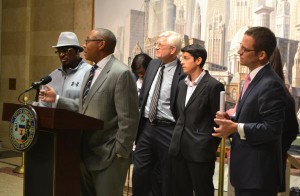
Proposal To Award Chicago Police Torture Victims Reparations
Victims of police torture under former Chicago Police Commander Jon Burge will share $5.5 million, receive an apology and have their story taught in school under a reparations package proposed recently. The proposal is expected to pass when the council votes on it this month.
More than 100 people who accused Burge and officers under his command of torture—from cattle-prod shockings, phone book beatings prods, and suffocation with bags until false confessions were given—over nearly two decades ending in 1991. While some have already settled for thousands or millions of dollars, the remaining dozens can each receive up to $100,000 under the proposed ordinance. More than $100 million has already been paid over the years in court-ordered judgments, settlements and legal fees. Amnesty International USA lauded the proposal, which it said was unlike anything a U.S. municipality has ever introduced.
Besides a provision that calls for teaching the Burge torture cases to 8th and 10th graders in public school history classes, the ordinance includes a formal apology from the City Council, and psychological counseling and other benefits such as free tuition at community colleges. In recognition that the torture, and in many cases wrongful convictions and lengthy prison sentences, has impacted victims and their families, the ordinance extends some benefits to victims’ children or grandchildren.
Burge, 67, was fired from the Chicago Police Department in 1993. He was never criminally charged with torture, but was convicted in 2010 of lying about torture in a civil case and served 4.5 years in federal custody. Still drawing his pension, he was released from a Florida halfway house in February.
Guest – Attorney G. Flint Taylor, a graduate of Brown University and Northwestern Law School, is a founding partner of the People’s Law Office in Chicago, an office which has been dedicated to litigating civil rights, police violence, government misconduct, and death penalty cases for more than 40 years
—————————————————
Civil Liberties, Gaza, Habeas Corpus, Human Rights, Prison Industry, Surveillance, Targeting Muslims, Truth to Power, War Resister
Podcast: Play in new window | Download
Updates:
- Heidi Boghosian:The Committee To Save Mumia Abu-Jamal Places Ad In New York Times – “Mumia Abu-Jamal Is Dying In Prison From Medical Neglect”
—–
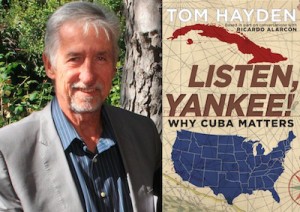
Listen Yankee: Why Cuba Matters
As relations between the United States and Cuba are radically changing, Tom Hayden’s new book Listen Yankee! Why Cuba Matters is especially timely. It offers thoughtful analysis and insights into the efforts of intellectuals, social justice activists and politicians that helped bring about normalization efforts.
Listen Yankee is both a historical account and personal memoir of Hayden as a revolutionary student leader and SDS founder whose own early work to spur poetical change mirrored the transformation going on in Cuba. His book is based in part on conversations with Ricardo Alarcon, one of the leaders of the revolution,. UN representative and a former guest of Law and Disorder.
Guest – Tom Hayden was a leader in the student, antiwar, and civil rights protests in the 1960s. He took up the environmental cause in the 1970s, leading campaigns to shut down nuclear power plants and serving as California’s first solar energy official. He was elected to the California legislature in 1982, serving for eighteen years. He continues to write as an editor for The Nation, and has taught at many campuses from Harvard’s Institute of Politics to UCLA’s labor studies
——
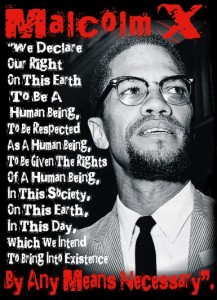
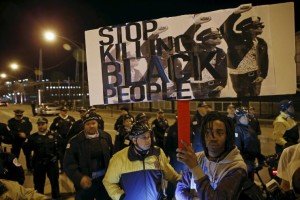
Baltimore and the Human Right to Resistance: Rejecting the framework of the Oppressor
Events continue to unfold within Baltimore, Maryland in response to the police murder of Freddie Gray. Today we examine how stereotypes are perpetuated of the rebels in the streets. The mainstream press, pundits and elected officials black and white call them thugs.
Guest – Ajamu Baraka is a human rights activist, organizer, geo-political analyst and editor and contributing columnist for the Black Agenda Report. Baraka serves as the Public Intervenor for Human Rights as a member of the Green Shadow Cabinet and coordinates the International Affairs Committee of the Black Left Unity Network. An Associate Fellow at the Institute for Policy Studies (IPS) in Washington, D.C., Baraka’s is also a contributor to “Killing Trayvons: An Anthology of American Violence” and Imagine: Living in a Socialist USA.
——————————————————–
CIA Sponsored Terror, Criminalizing Dissent, Gaza, Human Rights, Political Prisoner, Prison Industry, Targeting Muslims, Torture, Truth to Power
Podcast: Play in new window | Download
Updates:
- Michael Ratner: Edward Snowden Bust On Brooklyn War Memorial Replaced By Hologram
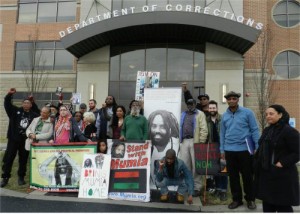
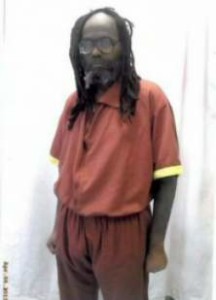
Mumia Abu-Jamal Health Crisis Update
Journalist and political prisoner Mumia Abu-Jamal continues to be in serious medical condition at SCI Mahanoy in Frackville, Pennsylvania. He has lost over 50 pounds and his body is covered with a hard, painful layer of jet-black skin that is both bloody and itchy. Last week his blood sugar registered in the mid 200s and continues to fluctuate, with doctors injecting a double shot of insulin right before he was brought out in a wheelchair to see visitors. As of that visit he had not been seen by a diabetes specialist, and there is concern that the insulin injections may result in an overdose or cause organ damage.
Mumia is so weak that when he tried to go to the infirmary’s bathroom, he could not sustain himself on his feet. He slid down to the floor and waited there, helplessly and unable to call for assistance, for 45 minutes until he was found by a doctor and another prisoner.
Support and demands for medical attention and an improved diet continue to pour in from around the globe. Two teachers delivered letters that their students had written to Mumia; one batch from a third grade class taught by Ms. Marylin Zuniga in Orange, New Jersey; the other from a group of high school students in the Philadelphia Student Union, which fights for school reform and is led by Mr. Hiram Rivera.
ACTION: Please call Secretary of Pennsylvania Corrections John E. Wetzel – 717-728-4109. Demand is that Mumia be allowed to see a team of specialist chosen by his family and supporters to assess and evaluate his condition.
Article: A Slow Death for Mumia Abu-Jamal and Thousands of Prisoners in America by Johanna Fernandez and Heidi Boghosian
Guest – Johanna Fernandez, assistant professor of history at Baruch College and an active member of the Campaign to Bring Mumia Home. She received a PhD in History from Columbia University and a BA in Literature and American Civilization from Brown University. Professor Fernández teaches 20th Century U.S. History, the history of social movements, the political economy of American cities, and African-American history.
—–


Palestinian Refugees in Syria
In a situation the United Nations has described as “beyond inhumane,” last week an estimated 300 ISIS extremists converged on Yarmouk Palestinian refugee camp in Damascus after three days of fighting. Humanitarian aid has failed to reach starving residents there, even as ISIS members, many of whom appear to be Syrian, portrayed the attack as a liberation of the camp’s residents. In fact the residents –3,500 of whom are children—have been under siege and starvation tactics for two years.
Syrian forces control all entrances to the north and east of Yarmouk and have largely resisted pleas by UNRWA for parcels of food and water to be allowed in. Jaysh al-Islam, one of the main Islamist opposition groups fighting against Isis in the camp, reported to the Guardian that 80 ISIS militants had been killed in a period of two days and some of its positions had been seized. Yarmouk, the largest Palestinian camp in Syria, has been a frequent battle zone, pitting regime forces against mainstream and Islamist rebels. Approximately 16,000 residents remain in the settlement, a decrease from 200,000 prior to the war.
Most inhabitants fled to Lebanon where they now live in overcrowded refugee camps. Many are refugees for the second time, having fled what is now Israel in 1967 or 1948. Some have attempted to flee on migrant boats to Europe and Egypt.
Guest – Salim Salamah, the head of the Palestinian League for Human Rights-Syria, and a former Yarmouk resident who fled in October 2012. He’s exiled in Sweden since February 2013 – spokesperson of the Palestinian League for Human Rights/Syria, a grassroots refugee and youth-led human rights collective.
————————————————————
Afghanistan War, Civil Liberties, Criminalizing Dissent, Habeas Corpus, Human Rights, Iran, Iraq Veterans, Iraq War, Political Prisoner, Prison Industry, Surveillance, War Resister
Podcast: Play in new window | Download
Updates:
- Attorney Heidi Boghosian Tells Of How She And Johanna Fernandez Found Out Mumia Abu-Jamal Was Rushed To Local Health Facility
- Campaign To Bring Mumia Home
- Attorney Michael Ratner: Hobby Lobby State Religious Freedom Acts
- Attorney Michael Ratner: Palestine Joins The ICC
- Attorney Michael Ratner: Obama Issues Executive Order On Hackers
—–


Why The Rise Of Fascism Is Again The Issue
Fascism has taken on many forms through the rise and fall of empires. One aspect of modern day fascism can seen as propaganda, lies and deceit used as political leverage to eventually absorb sovereign states. Our guest John Pilger lays out the swath carved by fascism in the last 70 years in his recent article Why The Rise Of Fascism Is Again The Issue. Using the word carefully, Pilger describes a new kind of fascism, centered in America but based on the big lie of war and aggression. Pilger documents key events from the Holocaust to Libya to Serbia, to Yugoslavia, to Afghanistan in the 1970s, to Vietnam and up to the current revival of fascism in the heart of Europe. We get a historic perspective from John Pilger, going all the way back to the second world war. If you think the wars in Iraq, Afghanistan, Yugoslavia, Libya and now the Ukraine occur by happenstance, you are mistaken says Pilger, an Australian-British journalist based in London. These are part of the American effort to become the global power.
Guest – John Pilger, an Australian-British journalist based in London. John has worked in many facets of journalism, including a correspondent in the Vietnam War, the Middle East Desk for Reuters in London, a documentary film maker, and a producer for the Independent Television Network in London. Pilger is known for his conscience, bravery and acute historical insight. His articles appear worldwide in newspapers such as the Guardian, the Independent, the New York Times, the Los Angeles Times.
————————————————————–

Is Law and Disorder important to you? Consider a tax deductible donation to the show. By making a donation, you’ll be helping Law and Disorder continue to provide the consistent high quality content on some of the most pressing legal, human rights and international issues. This radio show is now a sponsored project of Fractured Atlas, a non-profit arts service organization. Contributions for the charitable purposes of Law and Disorder must be made payable to Fractured Atlas only and are tax-deductible to the extent permitted by law.
CIA Sponsored Terror, Civil Liberties, Criminalizing Dissent, Crony Capitalism, Habeas Corpus, Human Rights, Iraq War, Military Tribunal, Political Prisoner, Prison Industry, Targeting Muslims, Truth to Power, War Resister
Podcast: Play in new window | Download
Updates:
- FBI: If You Give Us Assata Shakur, We’ll Free The Cuban Five
- Michael Ratner: Massive CIW March St. Petersburg, Florida 2015
- Alliance For Fair Food
—-
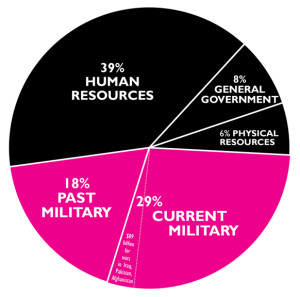
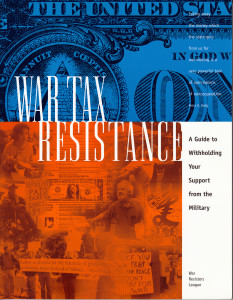
War Tax Resistance
As April 15 draws near, some Americans engage in the practice of war tax resistance, refusing to pay some or all of their federal income tax. It’s an act of civil disobedience with a proud history in this country. Notable war tax resisters included Henry David Thoreau who refused to pay his poll tax during the Mexican-American war. In the 1960s and 70s, many Vietnam war protesters engaged in the practice, including Norman Mailer, Howard Zinn, James Baldwin and Joan Baez. While individuals refusing to pay war taxes cite the refusal as a moral imperative-even citing international law to bolster this assertion—it’s not surprising that the Internal Revenue Service considers the refusal to pay such taxes as illegal.
Ruth Benn:
- In war tax resistance we tend to use the War Resisters League chart where your income tax money really goes and the calculations from the War Resisters League over the years have been around 50 percent.
- About 27 percent is current military so that’s paying for the wars and its buying the weapons for the next wars and all of those things that the Pentagon does.
- The “past military” is mainly for the debt and then the money that’s set aside for veterans.
- The nuclear weapons program which they are increasing over the coming 10 years, modernizing weapons and modernizing delivery systems. Obama is increasing that money for the nuclear weapons. That’s in the Department of Energy.
- We have the Department of Homeland Security. That is a lot of armed people also. The TSA, the militarization of the border. Homeland Security is giving those grants to local communities in the U.S. that are getting these military weapons.
- We have 500 billion this year for veterans and past military. That’s only going to add up.
- Basically, (war tax resistance) is similar to conscientious objection in terms of people who refuse to go into the military or refused the draft. So this is a refusal to have my tax dollars drafted. A refusal to pay income taxes that go into this pie of the military budget.
- There was a particular tax put on people in WW2. A stamp that people had to buy that was on their cars that supported war.
- (Famous tax resisters) We tend to go back to Henry David Thoreau of course with his one dollar that resulted in on the duty of civil disobedience.
- I always say going throughout history taxes first tend to be put on people because somebody wants to fight somebody. A government wants to go to war, that’s centuries back.
- The Vietnam War of course was the biggest time for tax resistance when it really was a strong part of the peace movement.
- The campaign during Vietnam to resist the telephone tax. A tax that was put on and raised during Vietnam. It was put on to 10 percent just to pay for the wars.
- People would owe 7.00 dollars in phone tax and some of them had their houses seized, some had their bicycles and cars seized.
- Within the network of war tax resisters and I hesitate to call it a movement these days, there are people who do a whole range of things. There are people who live on a very low income which is a legal way to do it. The cut off for filing and owing taxes is around 10 thousand dollars for a single person.
- There are people who are more adept at using credits and deductions to lower their taxable income.
- I think in ’87 I started very consistently filing and refusing to pay. You get a lot of letters. I have files and files of collection letters, of course they add up interest and penalties.
- Now I’m self-employed, the IRS can do things like garnish salaries. Over the years I figured out how to live in a way that makes it harder for them to collect. Not that they couldn’t make my life difficult.
- Mostly the IRS would like to get the money than prosecute people.
- I got active in the peace movement with the American Friends Service Committee. I’m not a Quaker myself but war tax resistance tends to known pretty well in the Quaker community.
- Usually you’ve been active (in peace movement) for a while and then you go . . oh, I’m paying for this. I’m paying for what I’m fighting against.
- nwtrcc.org
- War Tax Resisters Guide – The Book.
Guest – Ruth Benn, Coordinator of the National War Tax Resistance Coordinating Committee. Along with Ed Hedemann, she co-edited the fourth and fifth editions of the book “War Tax Resistance: A Guide to Withholding Your Support from the Military, published by the War Resisters League.”
—–

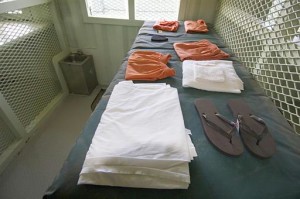
Life After Guantanamo: A Father And Son’s Story
In the weeks after September 11, 2001, the United States gave bundles of cash to Afghan war lords and the Pakistan government to assist in capturing suspected Taliban and Al-Qaeda fighters. Hundreds of men were turned over to U.S. custody often without evidence. This was an unfortunate starting point of how human lives were destroyed to as some suggest, justify an illegal war launched by the Bush Administration. Center for Constitutional Rights, senior staff attorney Pardiss Kebriaei’s Harper’s Magazine article titled Life After Guantanamo: A Father and Son’s Story traces the human toll of how her clients were wrongly imprisoned. After being picked up in Pakistan, sent back to Afghanistan, detained in Kandahar, Abdul Nasser Khantumani and his son Muhammed were interrogated by the United States and sent to Guantanamo Bay Prison in Cuba.
Attorney Pardiss Kebriaei:
- I started in 2007 and it took me year to be able to go down to the base. I went to down in mid 2008, that was the first time I met Muhammad.
- Muhammed was the son, he was a teenager and he was taken into U.S. custody. By the time I met him, he had been at Guantanamo for 6 years. 6 years without charge.
- What I say in the piece is he started breaking down, really kind of cracking in 2005.
- He was saying things like – I don’t care if I’m here another 5 years, another 10 years, I’m never getting out.
- He’d been held in solitary confinement for 2 years at that point, and there was this additional aspect of the way his relationship with his father was used to traumatize him.
- They were captured together, transferred to Guantanamo together but then, pretty much held apart in prison.
- In November of 2008 we met then in December he cut his wrists.
- He doesn’t call it suicide because he didn’t want to die. He just didn’t know what to do.
- We filed an emergency motion with the court, asking the court to move him out of solitary to get him close to his father, to do something.
- The latest hunger strike in 2013, they denied it was happening.
- Muhammed was young and he was really vocal and loud about his torture. I remember hearing him yell and scream.
- Abdul Nasser, his pain was quieter. There was a different kind of pain that left a wife behind or children behind. Abdul Nassar thought a lot about the rest of his family.
- We know that the CIA was paying millions of the dollars to the Pakistani government and Afghani war lords to profile and turn people over, basically sell them into U.S. custody.
- They came into U.S. hands because they profiled and unilaterally deemed by President Bush and Rumsfeld to be enemy combatants without any real evidence of wrongdoing.
- We know that happened and its not just groups like CCR saying that.
- The way that decisions are made and people are transferred (from Guantanamo Bay Prison) is such a lottery.
- I think Abdul Nassar appeared to be more of a burden frankly to them, because he was older and in ill health. They didn’t take him. They wanted a younger guy who they thought would be easier to resettle.
- Part of the point of the story was to shed light on just what life is like after Guantanamo.
- Abdul Nassar has not seen his wife since 2001. He hasn’t seen his other children since 2001. He hasn’t seen Muhammed since that day in 2009.
- http://ccrjustice.org/reunificationafterguantanamo
Guest – Pardiss Kebriaei, Senior staff attorney with the Center for Constitutional Rights, which she joined in 2007. Her work focuses on challenging government abuses post-9/11, including in the areas of “targeted killing“ and unjust detentions at Guantanamo and in the federal system. She is lead counsel for CCR in Al-Aulaqi v. Panetta, which seeks accountability for the killing of three American citizens in U.S. drone strikes in Yemen, and was counsel in Al-Aulaqi v. Obama, which challenged the authorization for the targeting of an American citizen placed on government “kill lists.” She represents men currently and formerly detained at Guantanamo in their efforts for release and reintegration, and represented the families of two men who died at the base in their lawsuit for accountability, Al-Zahrani v. Rumsfeld. She also represents Fahad Hashmi, who pled to material support for terrorism after years in pre-trial solitary confinement and Special Administrative Measures, in his efforts to challenge his continuing solitary confinement in a federal “supermax” prison.
——————————————————

Is Law and Disorder important to you? Consider a tax deductible donation to the show. By making a donation, you’ll be helping Law and Disorder continue to provide the consistent high quality content on some of the most pressing legal, human rights and international issues. This radio show is now a sponsored project of Fractured Atlas, a non-profit arts service organization. Contributions for the charitable purposes of Law and Disorder must be made payable to Fractured Atlas only and are tax-deductible to the extent permitted by law.
CIA Sponsored Terror, Criminalizing Dissent, Guantanamo, Human Rights, Political Prisoner, Prison Industry, Torture, Truth to Power
Podcast: Play in new window | Download
Updates:
- Michael Ratner: Palestine Not Recognized As State By U.S. Thus Allowed To Be Sued In Federal Court For Attacks on Israel
- Michael Ratner: Why Is Obama Trying To Get An AUMF When The U.S. Is Already At War With ISIS? If Passed, The U.S. Under This Act Can Make War Everywhere
- ICC En Vogue? – Hosts Talk About NBC Drama “Crossing Lines.”
—–

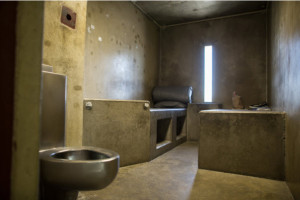
Pelican Bay Solitary Confinement Case Update
We bring you an update on the Pelican Bay Prison Solitary Confinement Case. As you may recall Pelican Bay Prison had more than 1000 prisoners in long term solitary confinement at 10-20 years or more. The Center for Constitutional Rights and its lead attorney Jules Lobel have been challenging this practice for a number of years since 2012. Recently, the state of California in an effort to blunt the lawsuit has transferred some of the named plaintiffs to other prisons. Their theory, once we’re rid of the plaintiffs maybe we’re rid of the lawsuit. CCR and Jules Lobel went out to California to argue that this is not a Constitutional practice. That transferring a person from Pelican Bay to another prison in California should not blunt the lawsuit and in fact CCR we should be able to challenge solitary confinement in those prisons as well. The judge agreed and now the CCR case will not just challenge Pelican Bay Prison solitary confinement practices but those in other prisons throughout California.
Attorney Jules Lobel:
- Because of 3 hunger strikes and our litigation the California prison officials are now instituting reforms. They realize they have to do something.
- There are over 1000 people in solitary. When we started the case 500 people were there for over 10 years.
- Because of the reforms they’ve made under pressure from our litigation there are now only 230. Still 230 people for over 10 years is a huge amount.
- They’re also moving people out not only to general population prisons, but to other solitary units in other prisons. Other SHOES, its called Special Housing Unit.
- Four of our ten plaintiffs are moving to another SHOE to a place called Tahachapi and the defendants say, they’re no longer part of your case.
- That’s what the argument was about. The argument was about whether or not you can expand the case beyond Pelican Bay.
- If you were at Pelican Bay and transferred to another prison, still in solitary, you’re still part of our class.
- The judge accepted that we can expand the case, rejecting the state’s argument.
- We bifurcated the trial so we could have a relatively quick trial on Pelican Bay. The fundamental question for Pelican Bay trial is whether keeping people for a prolonged period of time in solitary confinement at Pelican Bay is cruel and unusual punishment.
- We also have a claim in that way that they are placed there. It violates due process.
- These guys only get reviews every six years. So, you stay in your cell for six years and then after six years somebody comes and reviews whether you should be kept in solitary.
- No state in the country has six years. Usually its 30 days, 90 days, six months, maybe at most a year.
- California unlike most states puts people into solitary simply because they’re a member of a gang or associated with a gang.
Guest – Attorney Jules Lobel, has litigated important issues regarding the application of international law in the U.S. courts. In the late 1980’s, he advised the Nicaraguan government on the development of its first democratic constitution, and has also advised the Burundi government on constitutional law issues. Professor Lobel is editor of a text on civil rights litigation and of a collection of essays on the U.S. Constitution, A Less Than Perfect Union (Monthly Review Press, 1988). He is author of numerous articles on international law, foreign affairs, and the U.S. Constitution in publications including Yale Law Journal, Harvard International Law Journal, Cornell Law Review, and Virginia Law Review. He is a member of the American Society of International Law.
——

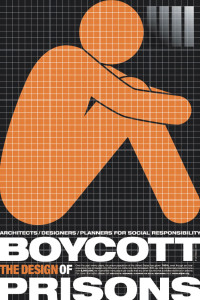
Architect’s Human Rights Code of Ethics Petition
In our coverage of psychologists involved with torture continuing to hold their professional licenses to practice we look at a similar concern with licensed architects who design prisons, solitary confinement cells and death chambers. Research has show that the design of a prison can influence many aspects of prisoners lives including recidivism rates. Recently, the American Institute of Architects rejected a petition to censure members who design solitary confinement cells and death chambers.
Raphael Sperry:
- In 2013 when the UN Special Rapporteur on Torture announced that spending more than 15 days in solitary confinement was a human rights violation and we’re aware that people in the United States are routinely held in solitary for years if not decades, and that there had been dozens of supermax prisons that housed thousands of people in those conditions, specially designed for that purpose, that really tipped the scales.
- That was really shocking to realize the same tools that architects use everyday trying to make the world a better place for people can be used to torture and kill people.
- The question of what constitutes a torture chamber is complicated. There are many buildings that have been used to house prisoners in solitary confinement that were never designed for that purpose.
- There are a subset of prisons that are designed for solitary confinement. They’re usually called administrated segregation units.
- Supermax prisons are the most egregious. There’s no space for people to eat together. There are no tables with seats clustered around them even.
- The recreation spaces that prisoners have a right to go into for an hour a day, are shrunk down to size that they’re for just one person.
- You guys are probably familiar with ADX Prison in Florence, the Federal Supermax which is supposed to be the most secure supermax in the United States.
- In that facility they actually have showers in every cell. The prisoners then actually don’t have to get into the hallway. They might walk by somebody elses’ cell or walk by somebody elses’ cell to get to a shower.
- The AIA has a code of ethics for members and it already had a statement saying members should uphold human rights in all their professional responsibilities.
- It’s not directly enforceable. If members set out to design a space intended to kill somebody or to torture them or degrade them which is a human rights violation. AIA is not prepared to take any disciplinary action to someone who does that.
- We were asking them to simply add a rule that clarified if a member designed a space that is intended for human rights violations specifically execution and prolonged solitary confinement that it would be clear they’re in violation of the code of ethics and then AIA could take disciplinary action that include censure and expelling them from the institute.
- The National Board of Directors gets to set the ethics code for the whole organization including all the chapters. They took in our petition. They took in all the letters of support we sent in.
- Then they didn’t communicate with us . . they referred it to an internal group. They never let us know who was on that panel. They sent a brief letter back to me head of the ADPSR saying that they weren’t going to make the change and they were concerned about potential anti-trust violations and how hard it would to enforce.
- Lastly, they don’t want to restrict their members from designing any particular building type. I just found that to be the worst.
- To me if you’re going to be a professional and take on the responsibility of protecting public health, safety and welfare every time you put your pencil down then there should be limits to what you do with that specialized knowledge.
- To us its not a political issue, its a human rights issue and they said they’re an organization that’s for human rights. It didn’t seem right to us that they should pick and choose which human rights they’re ok with and which ones they would restrict.
Guest – Raphael Sperry, president of Architects / Designers / Planners for Social Responsibility (ADPSR), a 32-year old independent non-profit organization. He researches the intersection of architecture and planning with human rights with a special focus on prisons and jails, and advocates for design professionals to play a larger role in supporting human rights in the built environment. He directs ADPSR’s human rights advocacy, including ADPSR’s petition urging the AIA to amend their Code of Ethics and Professional Conduct to address buildings that violate human rights. He was the first architect to receive a Soros Justice Fellowship from the Open Society Foundations, hosted jointly by the University of California at Berkeley College of Environmental Design and Berkeley Law School, in 2012. He is an active member of the AIA Academy of Architecture for Justice and a leader of its subcommittee on sustainability.He holds an M.Arch. from the Yale School of Architecture and a BA summa cum Laude from Harvard University.
—————————————

Please help support Law and Disorder by clicking on Fractured Atlas graphic. This radio show is now a sponsored project of Fractured Atlas, a non-profit arts service organization. Contributions for the charitable purposes of Law and Disorder must be made payable to Fractured Atlas only and are tax-deductible to the extent permitted by law. You can donate as little as 5.00 a month.






















